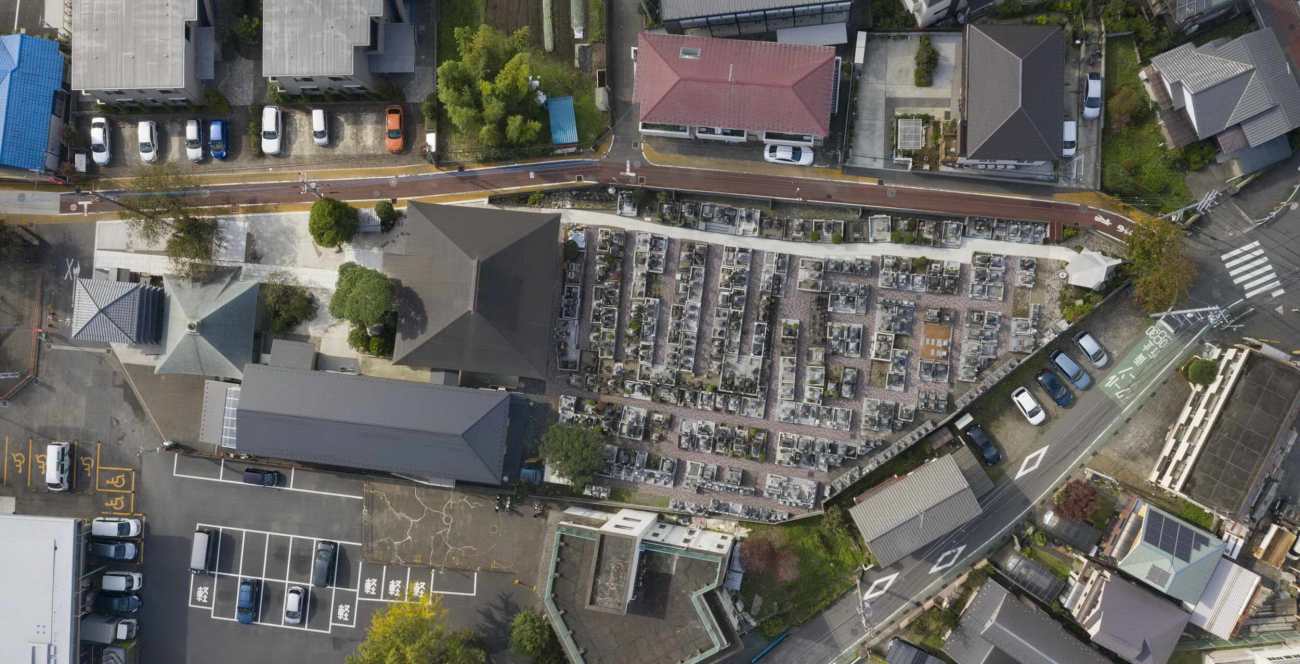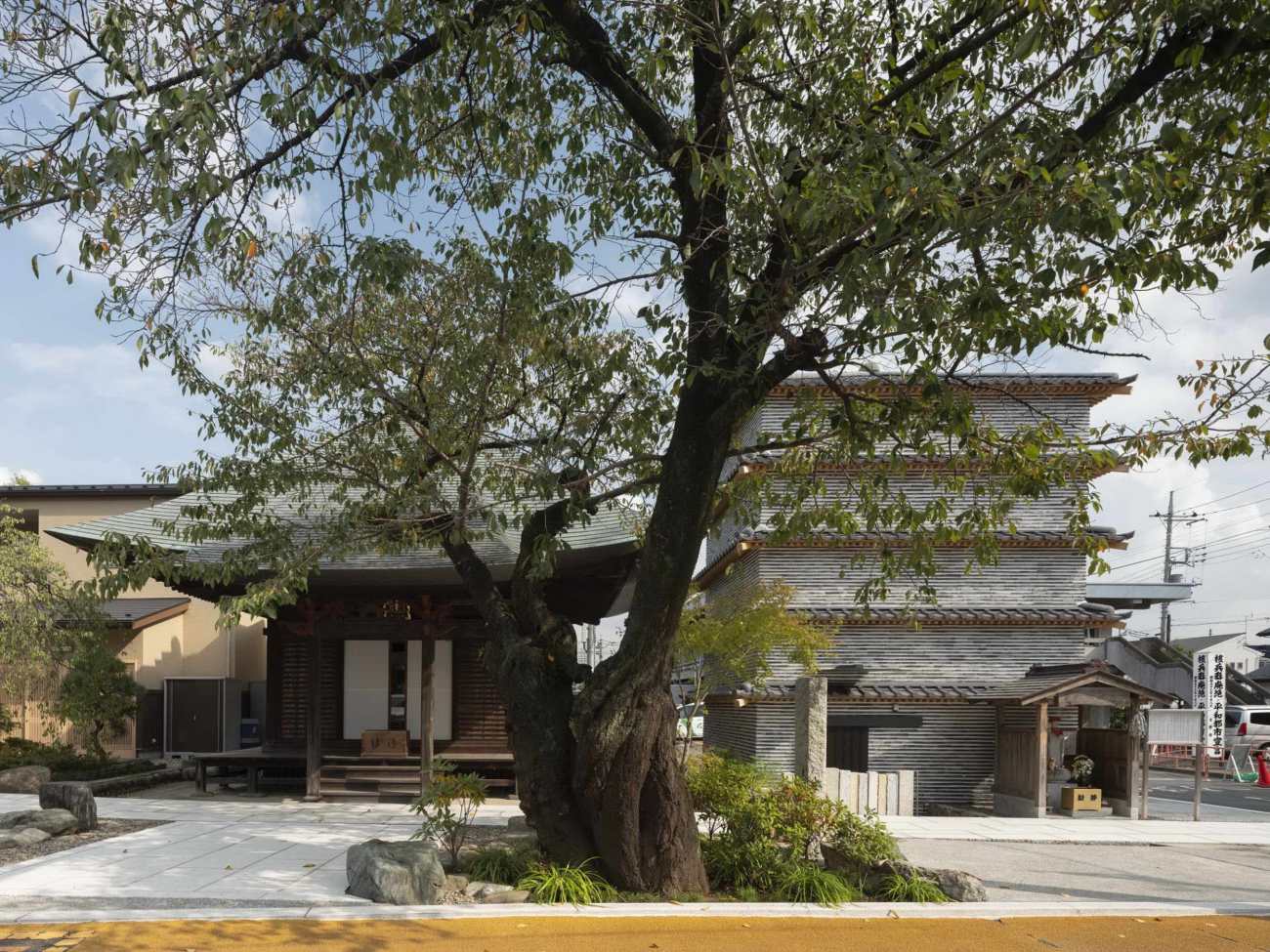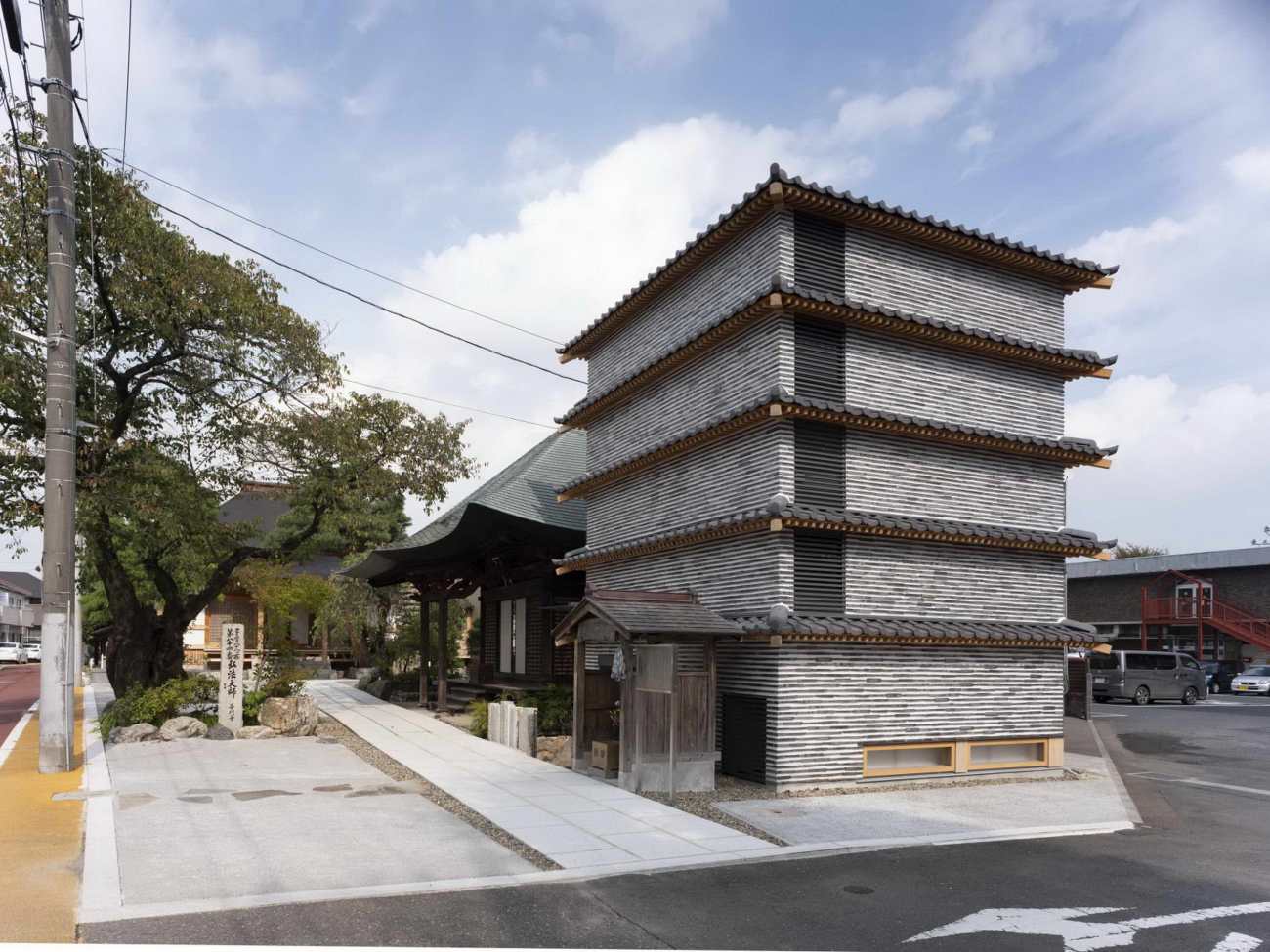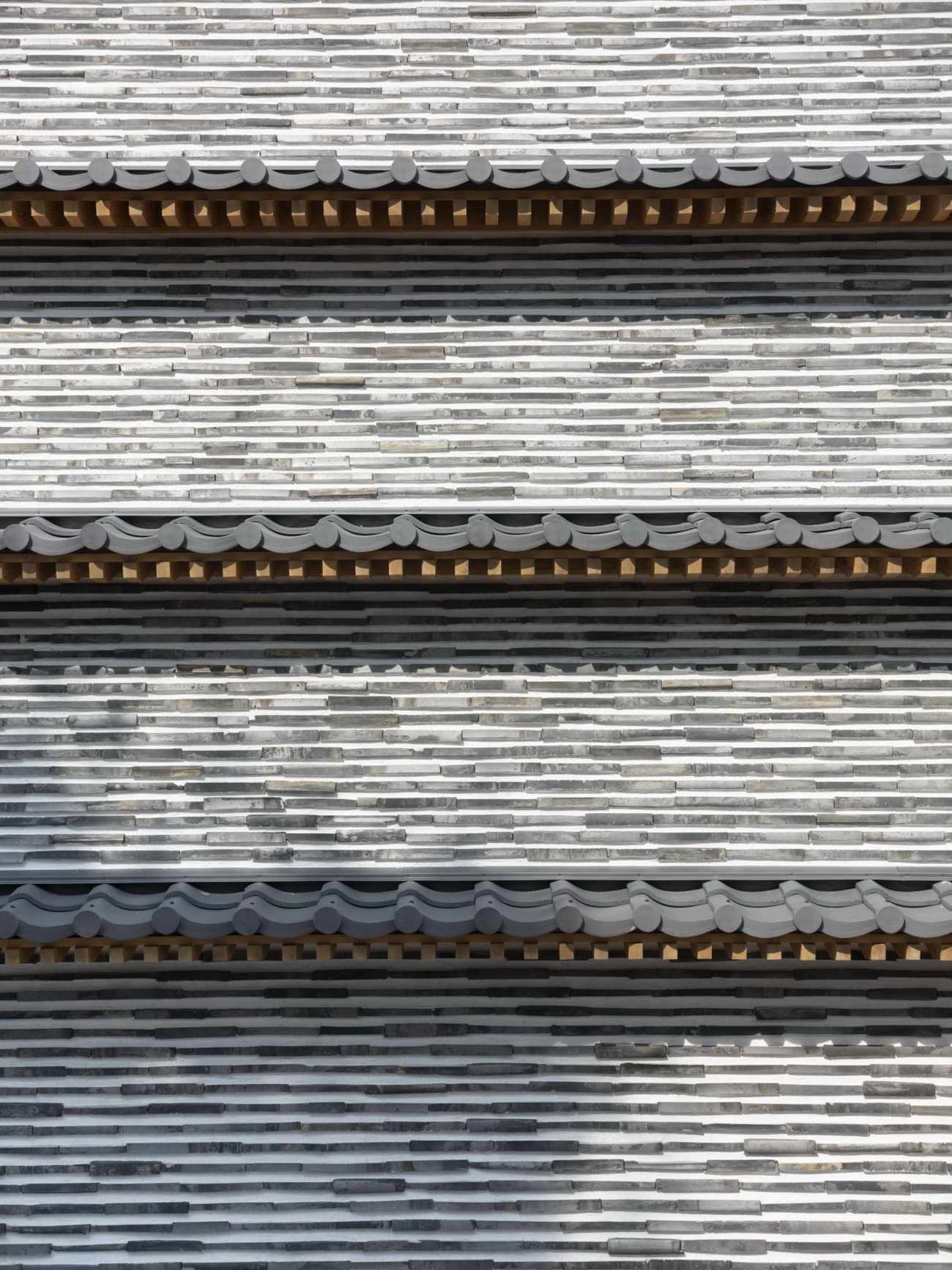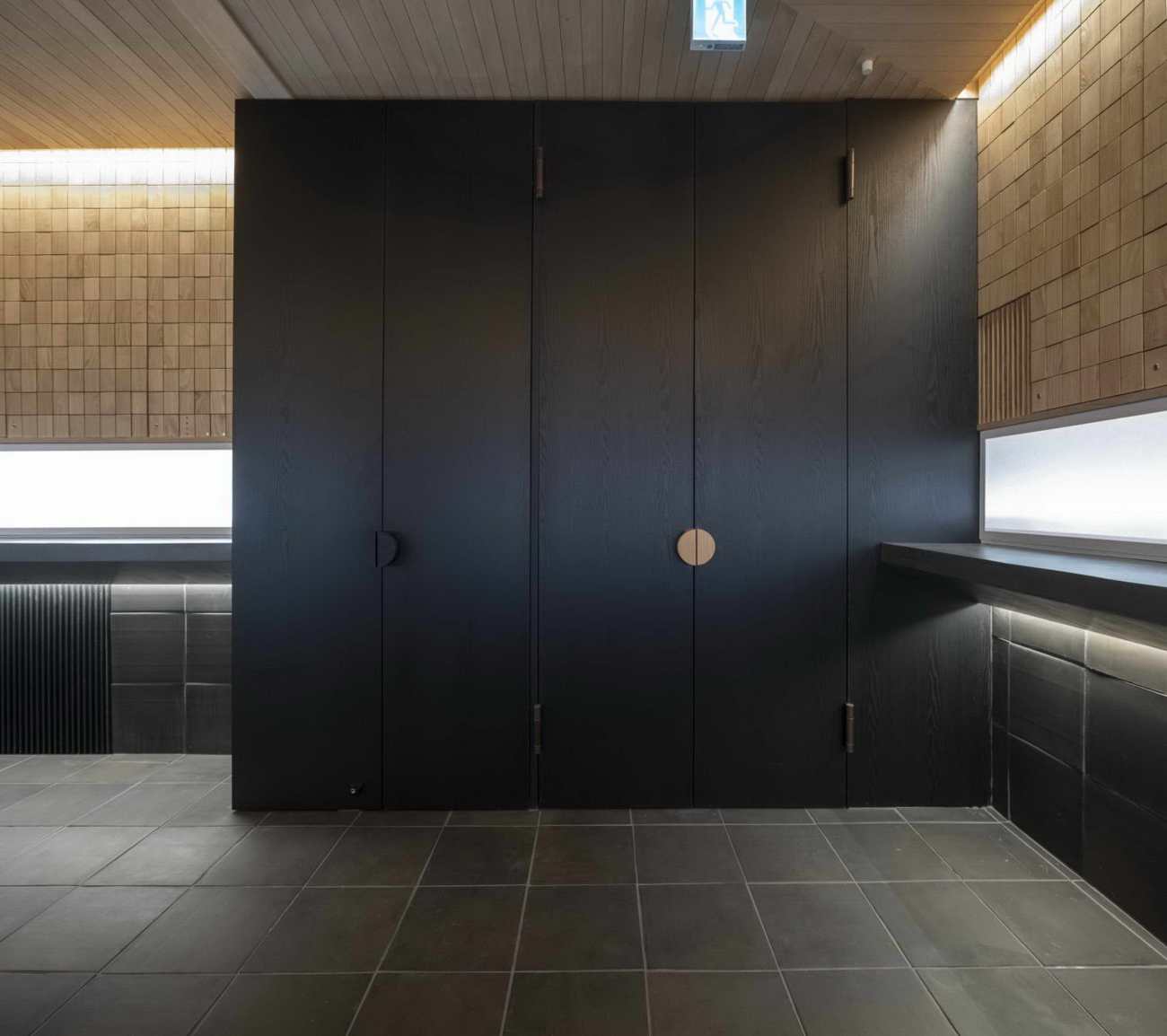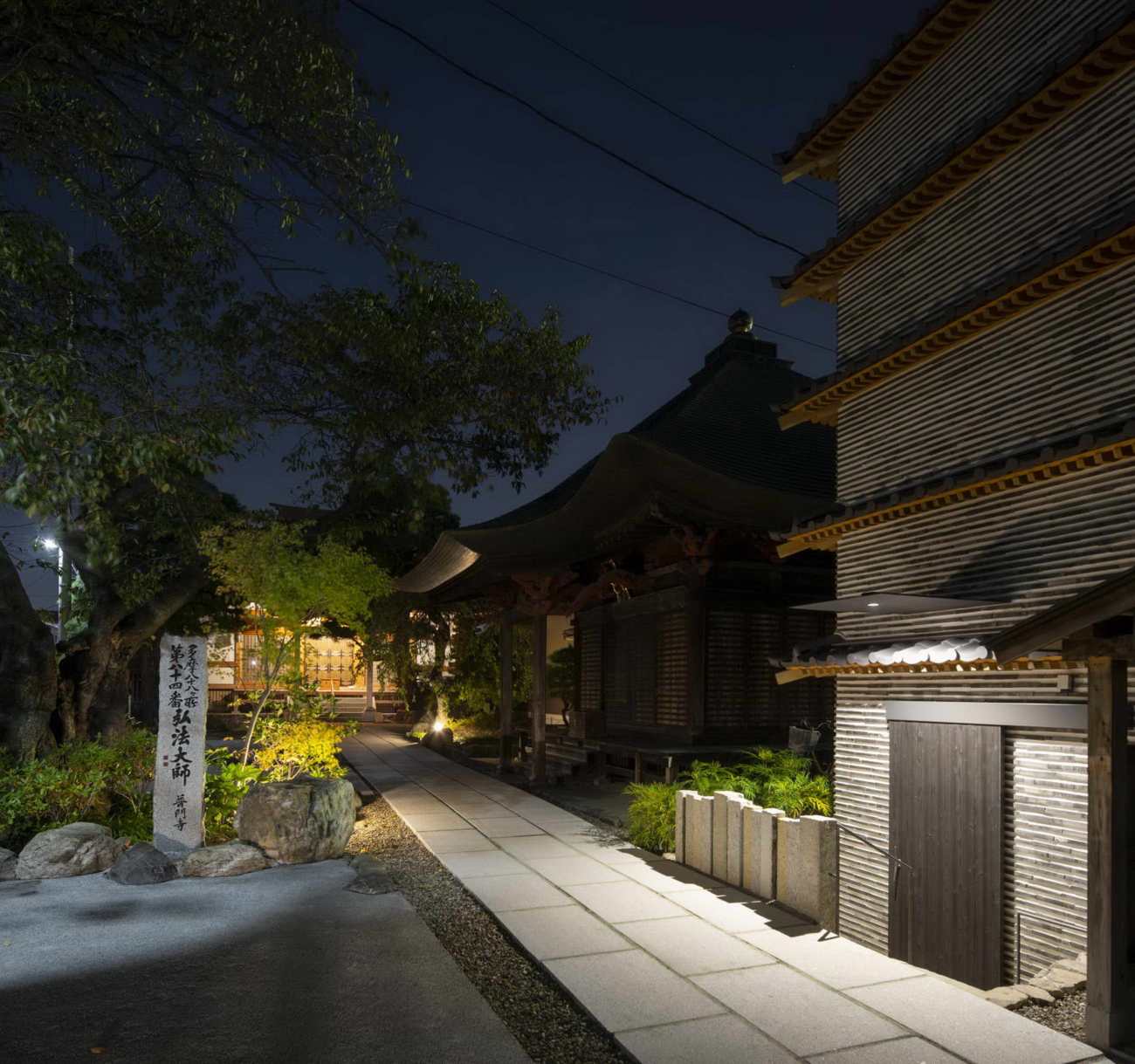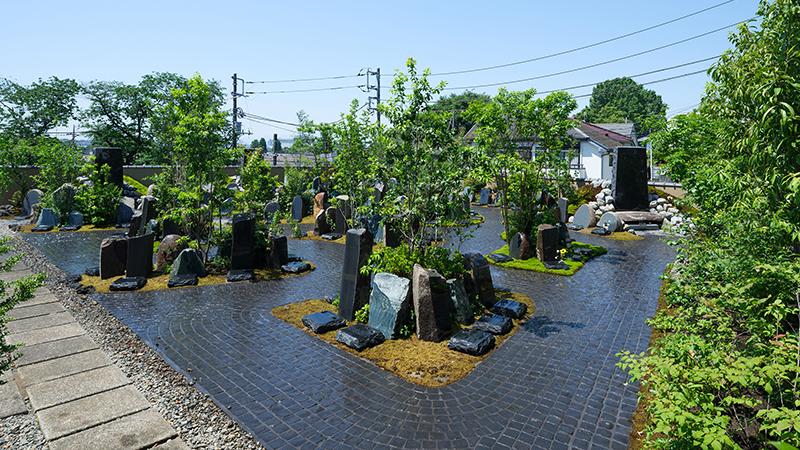| 公司: | LOVE ARCHITECTURE INC. | 类型: | 建筑 |
|---|---|---|---|
| 地区: | 日本 | 标签: | 宗教空间 |
该项目是在东京西郊1398年前创建的文殊寺的辖区一角新建一个墓地。辖区内南北狭长,完全被分割成两部分:北侧是墓址所在地,南侧是通往墓址的通道和大殿所在地。空地不多,只在南北两角各剩几块。况且,根据市里的条例,新建公墓有一定难度,教友人数也不能再增加。在这样的条件下,我们想出了一个方案,就是在辖区南、北两端,在园内树葬的前提下,建一个树葬的小厅和暂时照顾遗体的横津厅,将两者连接起来。
The project is to create a new cemetery in the corner of the precincts of Fumonji Temple, which was founded 1398 years ago in the western suburbs of Tokyo. The precincts of the site were narrow from north to south and completely divided into two parts: the north side, where the tomb site was located, and the south side, where the approach to the tomb site and the main hall were located. There is little vacant land, with only a few remaining at each of the north and south corners. Besides, the city’s ordinance makes it difficult to build a new cemetery, and the number of parishioners cannot be expected to increase any further. Under these conditions, we came up with a plan to link the two on the south and north ends of the precincts by building a small hall for a tree burial and Yokotsu hall, which temporarily takes care of the remains, on the premise of a tree burial in the garden.
▽项目鸟瞰 Aerial
北侧紧邻有200年历史的观音堂遗址,已被认定为市级物质文化遗产。原计划是将大部分建筑埋入地下,将地面变成石园。这样做的原因是为了避免将传统的观音堂,也就是禅修堂与现代的观音堂建筑并列。但是,地面非常坚硬,很难挖掘那么远。因此,开挖的范围被限制在一米以内,献殿与观音堂并列而建。其构想是借鉴了日本古代佛教寺院的布置,即在正殿前或旁边设置一座护殿,称为Narabido。
The north side of the site of a 200-year-old Kannondo, which has been recognized as a tangible cultural asset of the city, is adjacent to the site. The original plan was to bury most of the buildings in the ground and turn the ground into a stone garden. The reason for this was to avoid placing the traditional Kannon-do, known as Zen-so-yo, side by side with the modern construction of the Kannon-do. But the ground is so hard that it’s difficult to excavate that far. As a result, the excavation was limited to less than one meter, and the consecrated hall was built alongside the Kannon-do. The concept of this was based on the ancient Japanese arrangement of Buddhist temples in which a retainer hall was placed in front of or next to the main hall, called the Narabido.
▽Narabido与正殿并排 Narabido is next to the main hall
但是,现代建筑和古建筑的风格、结构、属性很难匹配。因此,我决定尝试一种强烈的近似,将它们升华到背景中,包括它们之间的差异。具体来说,全方位立面的外墙用刮掉的石膏,屋顶用旧瓦片。这两种材料都是随着岁月的流逝而自然变化的。此外,外墙还采用了传统的木质建筑设计,称为 "袖口楼"。它的效果是让只有三层的建筑看起来像 "五层宝塔"。
However, it is difficult to match the style, structure, and attributes of modern and old buildings. Therefore, I decided to try a strong approximation and sublimate them to the background, including the differences between them. Specifically, the exterior walls of the all-around façade were finished with scraped off plaster, and the roof was roofed with old tiles. Both are materials that naturally change with age. Besides, the exterior wall is decorated with a traditional wooden architectural design, called a “Mokoshi.” It has the effect of making a building that is only three stories that look like a “five-story pagoda.”
▽采用“袖口楼”手法,使得三层的建筑看起来有五层 the "Mokoshi" makes the building look like a five-story pagoda
▽立面细节 Detail of the facade
寺庙的骨灰堂是树葬前放置遗体的地方。地面低于地面85厘米左右,有楼梯进入室内。我们想在房间的中央放置一根柏木,并以这些柱子为中心,将祭祀者包围起来。在墙的中点,我开了一扇窗户,并将它圈在四面。白天,外面的光线从照壁门射进来,使礼拜堂充满了柔和的光线。在窗前,设置了供奉鲜花等的柜台,上面放置了一格带门的骨灰架。有意愿的人可以将自己的一些遗体放在骨灰盒里,安葬在这个地方。戒律将被刻在栗木门上(最终将装满2000多条戒律)。为了与这面墙保持连续性,地面铺上了瓷砖。天花板的横梁正好横在柱子之上,使空间有一种向心力的感觉。
The temple ossuary is a place where the remains are placed for a while until the tree burial. The floor is lowered about 85 cm below the ground level and a staircase enters the interior. We wanted to place a cypress log in the center of the room and use these pillars as a centerpiece to envelop the worshippers. At the midpoint of the wall, I opened a window and circled it on all sides. During the day, outside light comes in through the shoji doors and fills the chapel with soft light. In front of the window, a counter was set up for flower offerings, etc., and a lattice of urn shelves with doors was placed above it. Those who wish to do so may place some of their remains in an urn to be laid to rest in this place. The commandments will be inscribed on chestnut doors (which will eventually be filled with over 2,000 commandments). In continuity with this wall, the floor was tiled with tile. The ceiling beams were crossed just above the cypresses to give the space a centripetal feel.
▽中心木柱正好支撑于横梁交点,增添了空间庄严的氛围 Beams were crossed just above the cypresses to give the space a centripetal feeling
▽墙壁上的横窗为空间提供柔和的光线 outside light comes in through the shoji doors and fills the chapel with soft light
死者的遗体将被带到位于辖区最北端的合葬墓,以树葬的方式供奉。作为合葬墓,有必要结合连接南北两端的小厅和合葬墓的走向来考虑墓穴的视觉效果,从外面的街道上就能看到。
The remains of the deceased will be taken to the a combined grave located in the northernmost part of the precincts, and offered as a tree burial. It was necessary to consider the tomb’s visual effect as a joint enshrined tomb in conjunction with the approach that connects the north and south ends of the tomb with the small hall and the joint enshrined tomb, which are visible from the street outside.
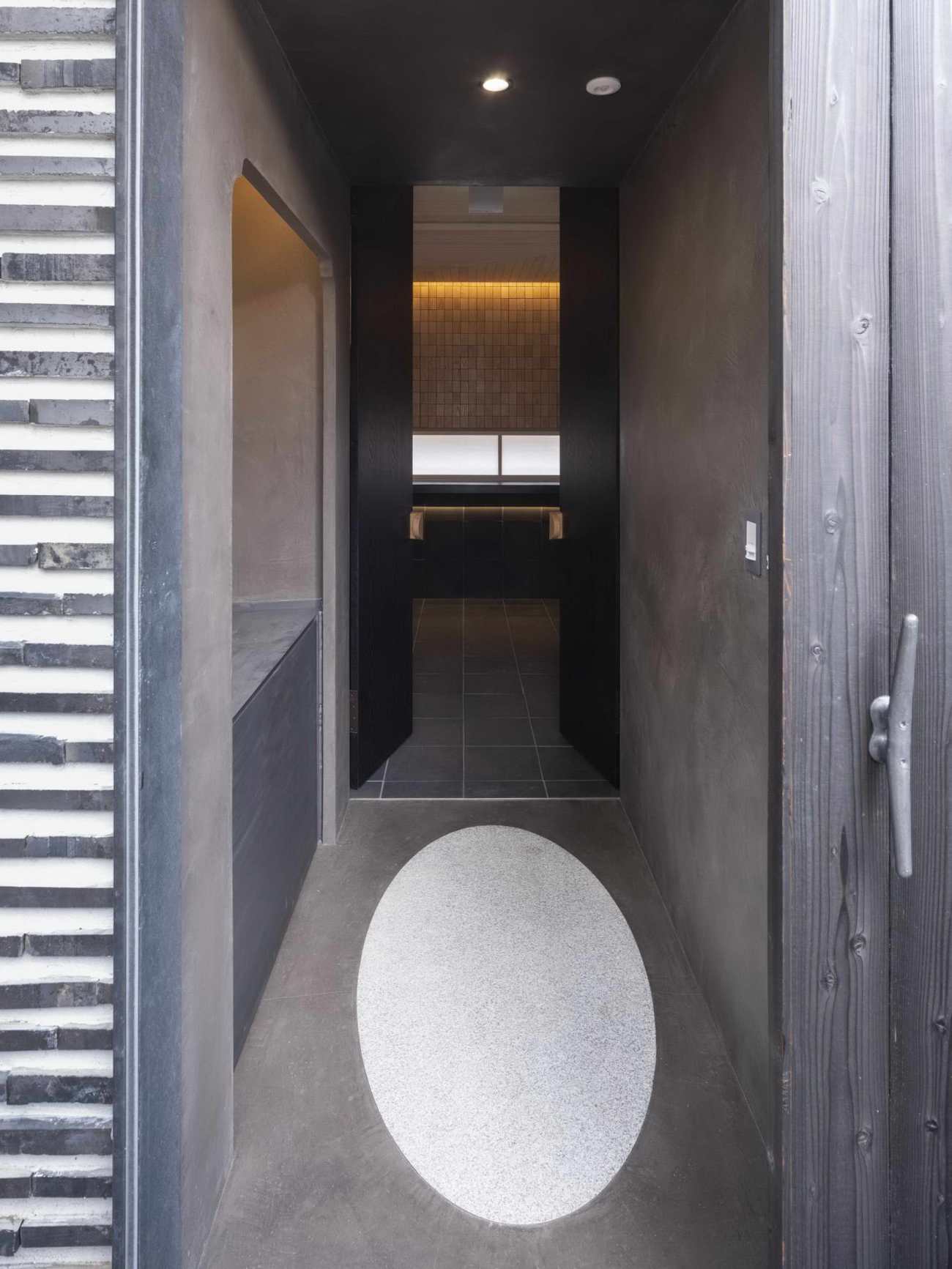 | 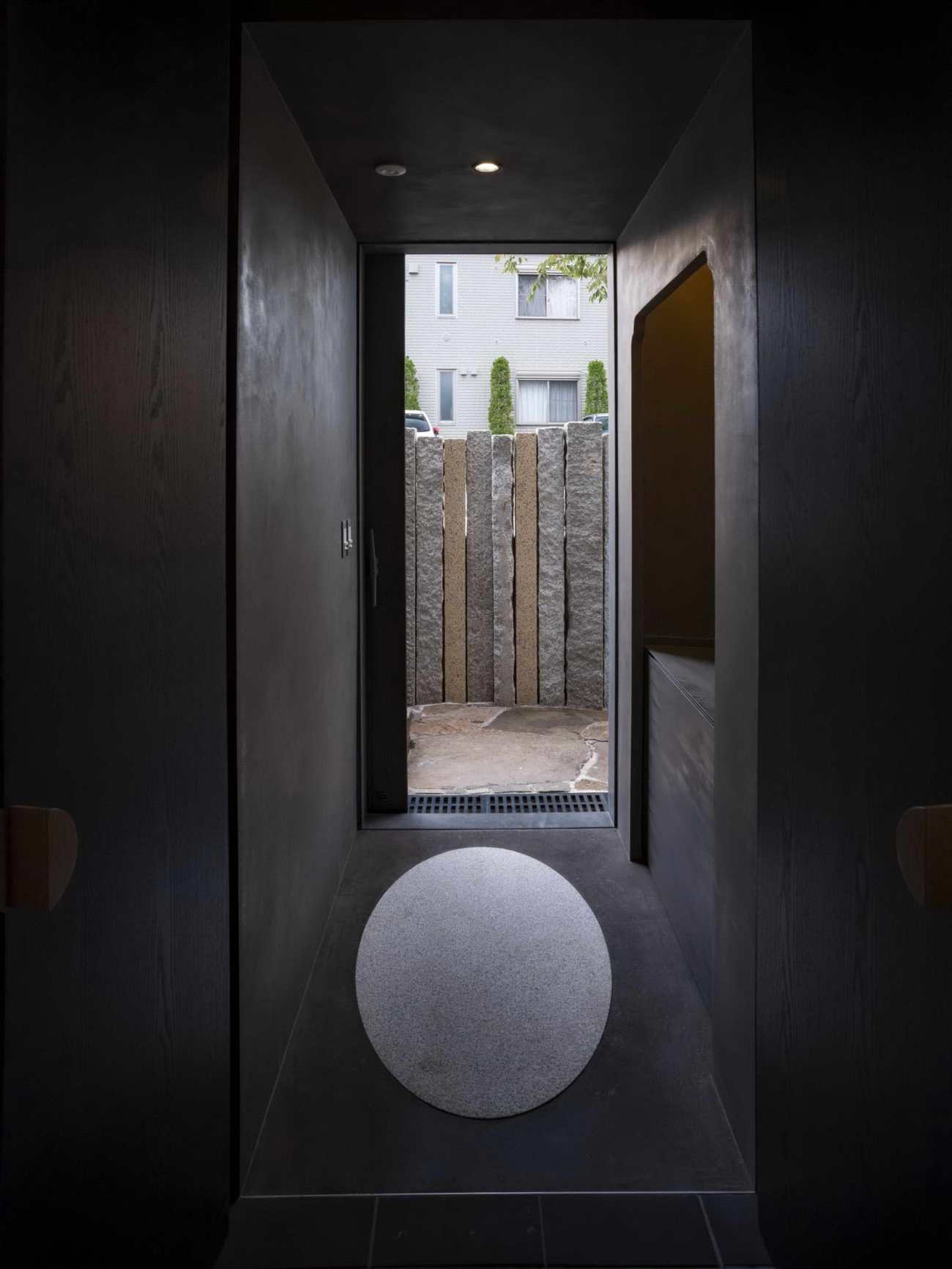 |
另外,与京都和奈良比较著名的寺庙不同,日本大部分寺庙的财政都是以丹卡制为基础,每个丹卡的墓碑大小、颜色、形状都不一样。两旁的墓区在设计上可以说是无序的。墓区占据了寺庙的大部分辖区,对寺庙的外观和整体景观有很大的影响。在这个项目中,我决定在无序的墓群中插入直线、等边三角形其有序的形状和几何图形,建造一座联合墓。
Also, unlike the more famous temples in KyotoandNara, most temples in Japanare financially based on the Danka system, with the size, color, and shape of the headstones varying for each Danka. The cemetery area lined with them can be said to be disorderly in design. The grave area occupies most of the temple’s precincts and has a significant influence on the appearance of the temple and the landscape as a whole. In this project, I decided to build a joint tomb, by inserting extremely ordered shapes and geometries, such as straight lines and triangles, into the disordered group of tombs.
▽在墓群中建造的等边三角形小亭 Small hall in the grave area
这个小厅也需要从三个方向接近:温室、寺庙的后门和树葬时的祭拜方向。在顶部架设了三面带有条形图案的折叠混凝土墙,使它们在顶部相接。内部的设计,使木格子垂直排列,抬头看时,辐射到地面的线条在天花板上的某一点连接起来。
This small hall also needed to be approached in three directions: the conservatory, the back entrance to the temple, and the direction of worship at the time of the tree burial. Three walls of folded concrete with a striped pattern were erected at the top so that they would meet at the top. The interior is designed so that the wooden lattice is arranged vertically so that when looked up, the lines radiating down to the ground are connected at a point in the ceiling.
▽小厅外观 Exterior
 | 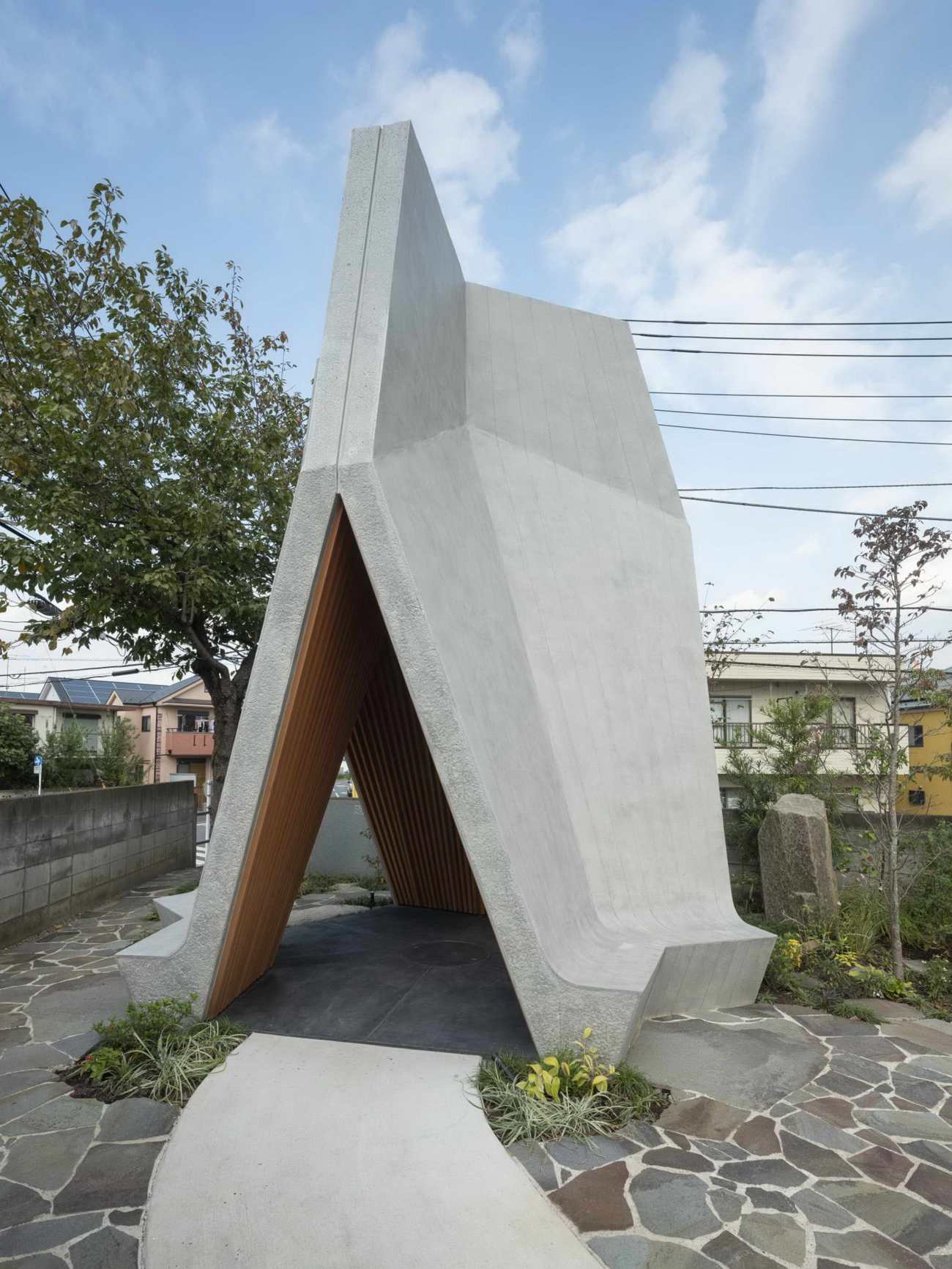 |
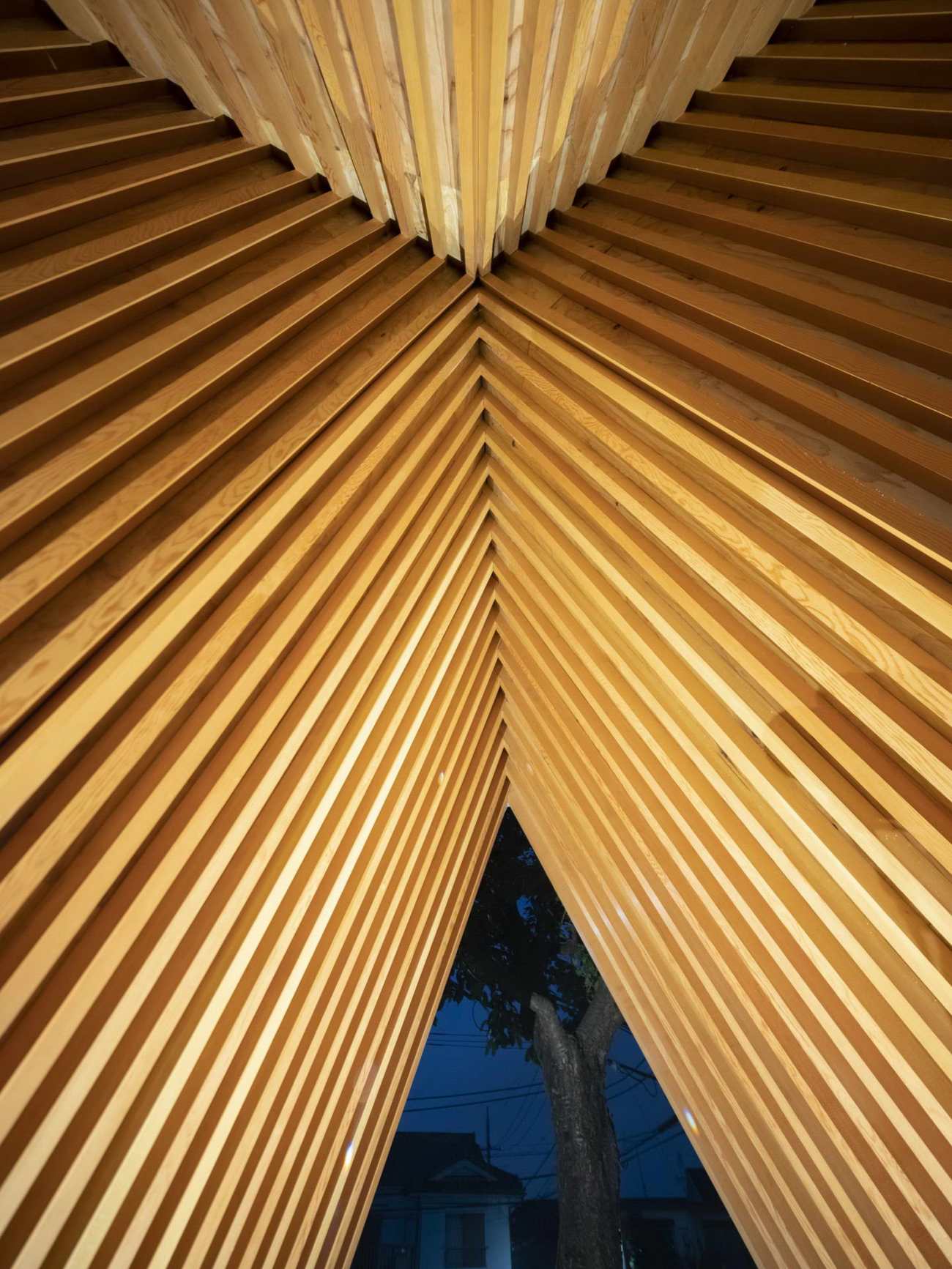 |  |
包括场地在内的三角形的简单几何形状与水泥和木头的材料形成了鲜明的对比,蜿蜒曲折地走近墓穴,走近墓穴就会感受到各种体验。
The simple geometric shape of the triangle, including the site, contrasts with the materials of concrete and wood, and the meandering approach to the tomb reveals a variety of expressions as you approach the tomb.
▽由远至近时的不同体验 A variety of expressions as you approach the tomb
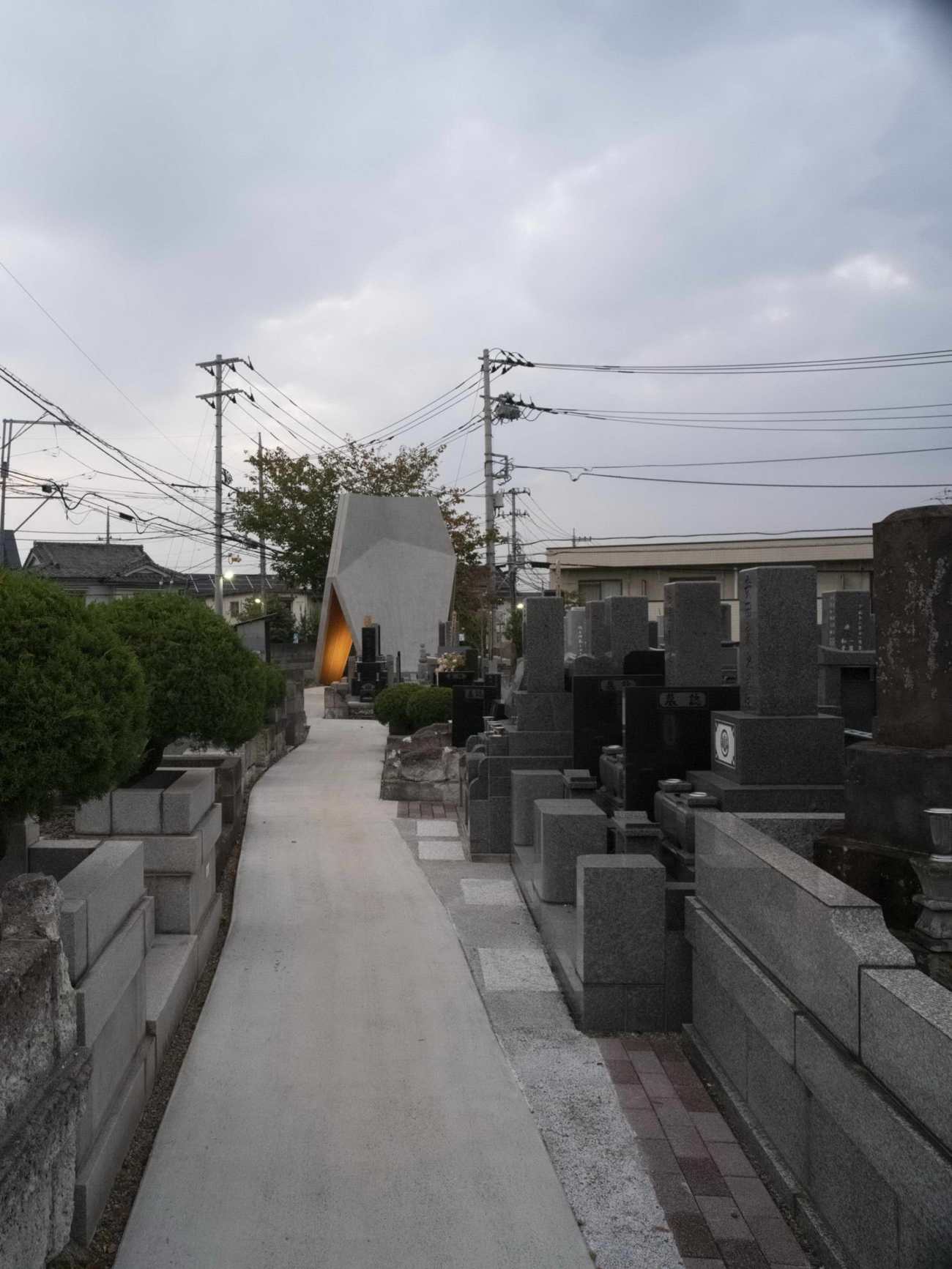 |  |
无论是公墓还是坟墓,换个角度看,都没有更多的功能,只是一个遗体的仓库。当人们参观公墓时,他们感受到的不仅仅是这些,也许是由于祖先崇拜等宗教力量。作为建筑师,我所做的就是利用材料、几何、光线来吸引祭拜者的感觉器官,建立一个与世俗分割的圣殿。我们一直想在日本寺庙的景观中创造一种设计的连续性,由于上面的丹卡系统,日本的寺庙被分为墓地和寺院。这次在文文寺日野宿道之公墓的作品就是其中的一个尝试。
Neither the cemetery nor the grave, to put it another way, has any more function than a warehouse for the remains. When people visit a cemetery, they feel something more than that, perhaps due to religious forces such as ancestor worship. What I did as an architect was to use materials, geometry, and light to appeal to the worshippers’ sensory organs and to establish a sanctuary divided from the mundane. I have long wanted to create a design continuity in the landscape of Japanese temples, divided into cemeteries and monasteries due to the Danka above system. This work at thecemeteryofFumonji Hinojyuku Michinono Michi is one of the attempts.
▽夜景 Night Viewing
▽夜景 Night Viewing
Project name: Michinoboen in Fumonji
Company name: LOVE ARCHITECTURE INC.
Website: http://www.lovearchitecture.co.jp/
Contact e-mail: contact@lovearchitecture.co.jp
Project location: 7-5-9, Honmachi, Hino-shi, Tokyo, Japan
Building area (m²)
・Ossuary:475.42㎡
・Small hall:24.78m2
Contruction :Kanamekenso
Structural designer: Denkoubou
Landscaping: N-tree
Photo credits: © 2019 Sadamu Saito
更新日期:2020-10-12 14:57:24
非常感谢 LOVE ARCHITECTURE INC. 带来的精彩项目, 查阅更多Appreciations towards LOVE ARCHITECTURE INC. for sharing wonderful work on hhlloo. Click to see more works!
